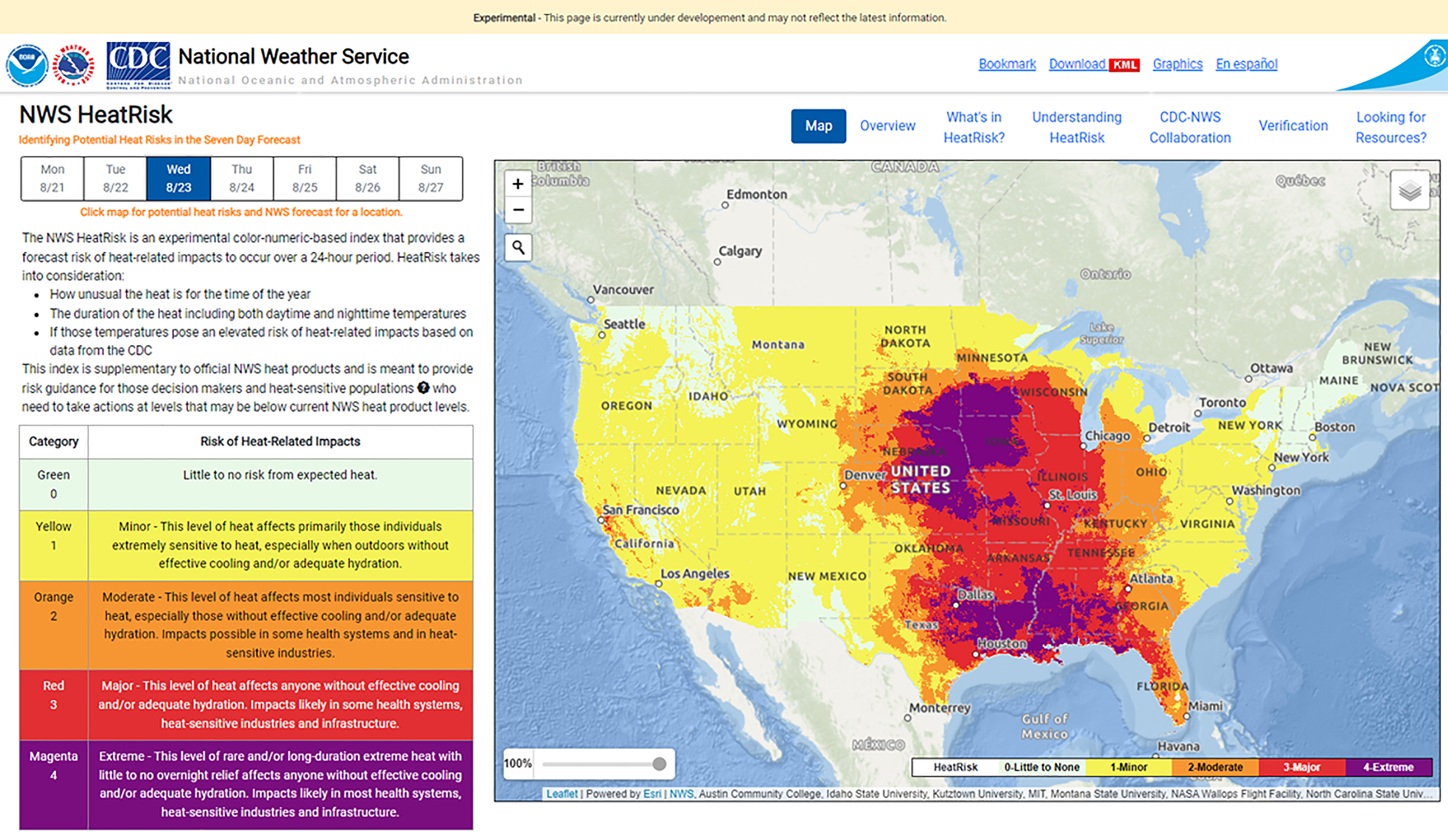Collaboration with CDC provides health guidance for those most vulnerable to heat

The sun rises above the Empire State Building in New York City on August 4, 2022, as seen from Hoboken, New Jersey. (Image credit: Getty Images)
NOAA is expanding the availability of a new experimental heat tool called HeatRisk ahead of the hot summer months. A collaboration with NOAA’s National Weather Service (NWS) and the Centers for Disease Control and Prevention (CDC), HeatRisk provides information and guidance for those who are particularly vulnerable to heat and may need to take extra precautions for their health when the temperature rises.
HeatRisk provides historical context for high temperature forecasts, identifying how unusual the heat will be for any given time of year across a spatial area with coverage across the contiguous U.S. It also identifies temperatures that are expected to bring increased heat impacts over a 24-hour period, up to seven days in advance.
The tool takes into account cumulative impacts of heat by identifying the expected duration of the heat, including both daytime and nighttime temperatures. HeatRisk is divided into a number and color-coded scale — ranging from zero to four and minor to extreme — that identifies the risk of heat-related impacts.

NOAA and the CDC have a strong history of collaborating on heat health awareness and resilience. In 2015, the agencies founded the National Integrated Heat Health Information System (NIHHIS), which leads the federal interagency effort to develop community resilience to the impacts of extreme heat through societal understanding of heat risks, science-based solutions and improved capacity, communication and decision-making to reduce heat-related illness and death.
“Climate change is causing more frequent and intense heat waves that are longer in duration, resulting in nearly 1,220 deaths each year in the U.S. alone,” said NOAA Administrator Rick Spinrad, Ph.D. “Last year was the warmest year on record for the globe, and we just experienced the warmest winter on record. HeatRisk is arriving just in time to help everyone, including heat-sensitive populations, prepare and plan for the dangers of extreme heat.”
“Heat can impact our health, but heat-related illness and death are preventable,” said CDC Director Mandy Cohen, M.D., M.P.H. “We are releasing new heat and health tools and guidance to help people take simple steps to stay safe in the heat.”
NWS developed the first HeatRisk prototype for California in 2013 and expanded it to the Western U.S. in 2017. While HeatRisk thresholds in the first prototype were based on local climate trends, the thresholds now also include heat-health impact information from the CDC. HeatRisk is available across the contiguous U.S. as an experimental product while NWS accepts feedback from the public. Customers can submit feedback through September 30, 2024 by completing this survey offsite link.
HeatRisk complements the heat index and wet-bulb globe temperature, two established NWS heat forecast products for heat stress.
Climate, weather, and water affect all life on our ocean planet. NOAA’s mission is to understand and predict our changing environment, from the deep sea to outer space, and to manage and conserve America’s coastal and marine resources.
Media contact
Michael Musher, NOAA Communications, michael.musher@noaa.gov, (771) 233-1304



